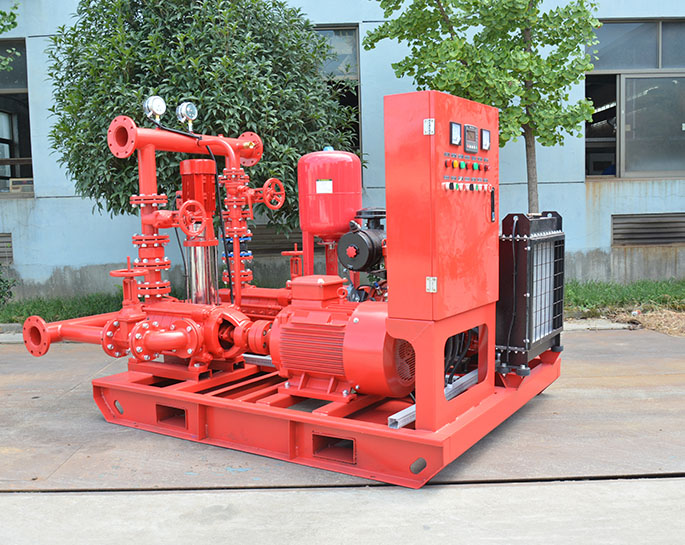Commonly used material properties for fire pumps
Fire pumps are critical components of fire protection systems, and their material properties are carefully selected to ensure reliable performance under varying conditions, including high temperatures, pressure fluctuations, and potential exposure to fire. Here are some commonly used material properties for fire pumps:
1. Pump Casing and Impeller:
- Material: Cast iron, ductile iron, bronze, or stainless steel.
- Properties: These materials provide good resistance to corrosion, thermal expansion, and wear. Stainless steel is often chosen for higher resistance to corrosion and elevated temperatures.
2. Shaft:
- Material: Stainless steel (commonly 300 series, such as 304 or 316).
- Properties: Stainless steel provides excellent corrosion resistance and strength. It can withstand the mechanical stress and potential exposure to water and heat.
3. Seals and Gaskets:
- Material: Various types of elastomers, including EPDM, Nitrile, Viton, etc.
- Properties: These materials offer good sealing properties and resistance to water, chemicals, and temperature variations. The choice depends on the specific fluid being pumped and the operating conditions.
4. Bearings:
- Material: Bronze, stainless steel, or other bearing-grade materials.
- Properties: Bearings need to handle mechanical stress and potential water exposure. Bronze and stainless steel offer suitable properties for these applications.
5. Bolts and Fasteners:
- Material: Carbon steel or stainless steel.
- Properties: Bolts and fasteners should have good tensile strength, corrosion resistance, and resistance to thermal expansion.
6. Motor Housing:
- Material: Cast iron or aluminum alloy.
- Properties: The motor housing needs to provide protection for the pump's motor and electrical components. Cast iron provides durability, while aluminum is lightweight.
7. Electrical Components:
- Material: Fire pumps' electrical components need to be designed for fire safety and to withstand high temperatures. Electrical enclosures may be made of steel or other heat-resistant materials.
8. Fire Pump Controller Enclosure:
- Material: Steel or aluminum.
- Properties: The controller enclosure should be sturdy and capable of protecting the electrical components from environmental conditions and potential fire exposure.
9. Couplings:
- Material: Steel, stainless steel, or other suitable alloys.
- Properties: Couplings need to transmit power and handle mechanical stress. The material choice depends on the required strength and corrosion resistance.
10. Piping and Flanges:
- Material: Steel, stainless steel, or other corrosion-resistant alloys.
- Properties: The material should handle the pressure and temperature fluctuations of the pumped fluid. Stainless steel is often chosen for its corrosion resistance.
The material properties for fire pumps are chosen to ensure durability, reliability, and performance during both normal operation and fire emergencies. Selection depends on factors like the type of fluid being pumped, the operating environment, potential fire exposure, and the specific codes and standards governing fire protection systems. It's essential to consult with engineers and follow industry standards to select the appropriate materials for fire pump components.







